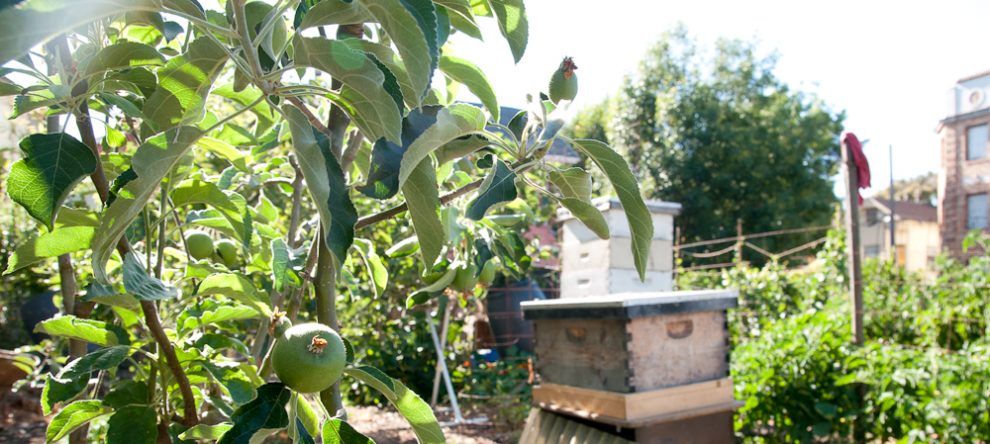I know, I know, first there was the chicken class in Kansas City. And then there is the upcoming turkey workshop in Austin, TX this Saturday. And now, I’d like to announce the Brooklyn rabbit class.
The Complete Rabbit, Brooklyn, NY November 15
Rabbits are the new chicken. More and more urban farmers are discovering the benefits of raising rabbits for meat in the city: bunnies are quiet, prefer to be kept in shady locations, reproduce quickly, and can be fed scraps.
This class will cover rabbit basics: housing, sourcing food for them on a budget, breeding, and harvesting. A quick and humane technique for killing meat rabbits will be demonstrated, as well as dressing and preparing the rabbit for the table.
Following the slaughter portion of the class, there will be a three hour break, and class will resume at Marlow and Daughter for a hands-on butcher and cooking class with Samin Nosrat. She will demonstrate how to extract the most flavor from your rabbit, with recipes for a rich stock, kidney and liver paste, Tuscan rabbit ragu and tips on how to best season, grill and braise the meat.
So some might wonder, why is it that in every city I travel to, something has to die?
As an urban farmer I’ve been doing all these things–planting, breeding, harvesting–in the private world of my little farmlette. After being on book tour for a few months (on and off), I came to know that it was possible to just go from town to town doing a power point presentation and never get my hands dirty. This seemed unbearably isolating. In fact, I started calling my physical body “The Carcass” while I was on tour. As in, The Carcass boards plane at noon, then is on book panel at 3pm. Fed Carcass dinner, early to bed, then meet for coffee with a local newspaper writer where Carcass says tantalizing things about urban farming movement.
But, you see, what the carcass really wants to do is hang out with the chefs at the local restaurant, help organize an event with the local food rabblerousers, and perhaps teach a class that will help other urban farmers. So, that was the motivation.
Now that Samin (the chef) and I have been actually teaching the classes, I realized that there is a huge hunger out there for people to connect to their food. Maybe they are raising chickens themselves and want to learn the best practice for culling a rooster. Maybe they have been thinking about raising turkeys but don’t know how to start. Maybe they are disturbed by factory farming and want to know their meat by raising it themselves. All of the people I’ve encountered so far are fired up after our classes. Something as intimidating as processing your own animal suddenly makes sense, it is doable, and here’s the thing–it is kind of beautiful. I remember the first time I learned how to kill a turkey. It opened my eyes to the entire world. I suddenly saw connections between me and my ancestors. I felt connected and reverential for the animals we eat. I also felt skilled and useful. It makes me proud to pass that feeling on. And so, I do.
If you can’t do the rabbit class, I’ll be at the following places in New York City:
November 10, Presentation. Horticultural Society of New York, 6pm
November 11, Reading. Vox Pop cafe, 1022 Cortelyou Road, Brooklyn NY, 7pm
Hope to meet you soon…If I start to look like a carcass, slap me!





 I returned to the United States early this week, jet lagged and haggard. Billy picked me up in Miami and we went directly to the Calle Ocho–which is where the best Cuban food in America is made. We then drove back to Orlando where another plane would take us back to San Francisco. Our bellies full of Chicken with Yellow Rice and Cubano sandwiches, we cruised down the highway in a Lincoln Continental (the car of Bill’s mom). As we drove, the band Denegue Fever rocked our world, and a lightening storm started. I’ll admit it: I always feel relieved when I return to the United States. Everything feels so ad hoc and jumbled, for good and bad, I suppose.
I returned to the United States early this week, jet lagged and haggard. Billy picked me up in Miami and we went directly to the Calle Ocho–which is where the best Cuban food in America is made. We then drove back to Orlando where another plane would take us back to San Francisco. Our bellies full of Chicken with Yellow Rice and Cubano sandwiches, we cruised down the highway in a Lincoln Continental (the car of Bill’s mom). As we drove, the band Denegue Fever rocked our world, and a lightening storm started. I’ll admit it: I always feel relieved when I return to the United States. Everything feels so ad hoc and jumbled, for good and bad, I suppose.